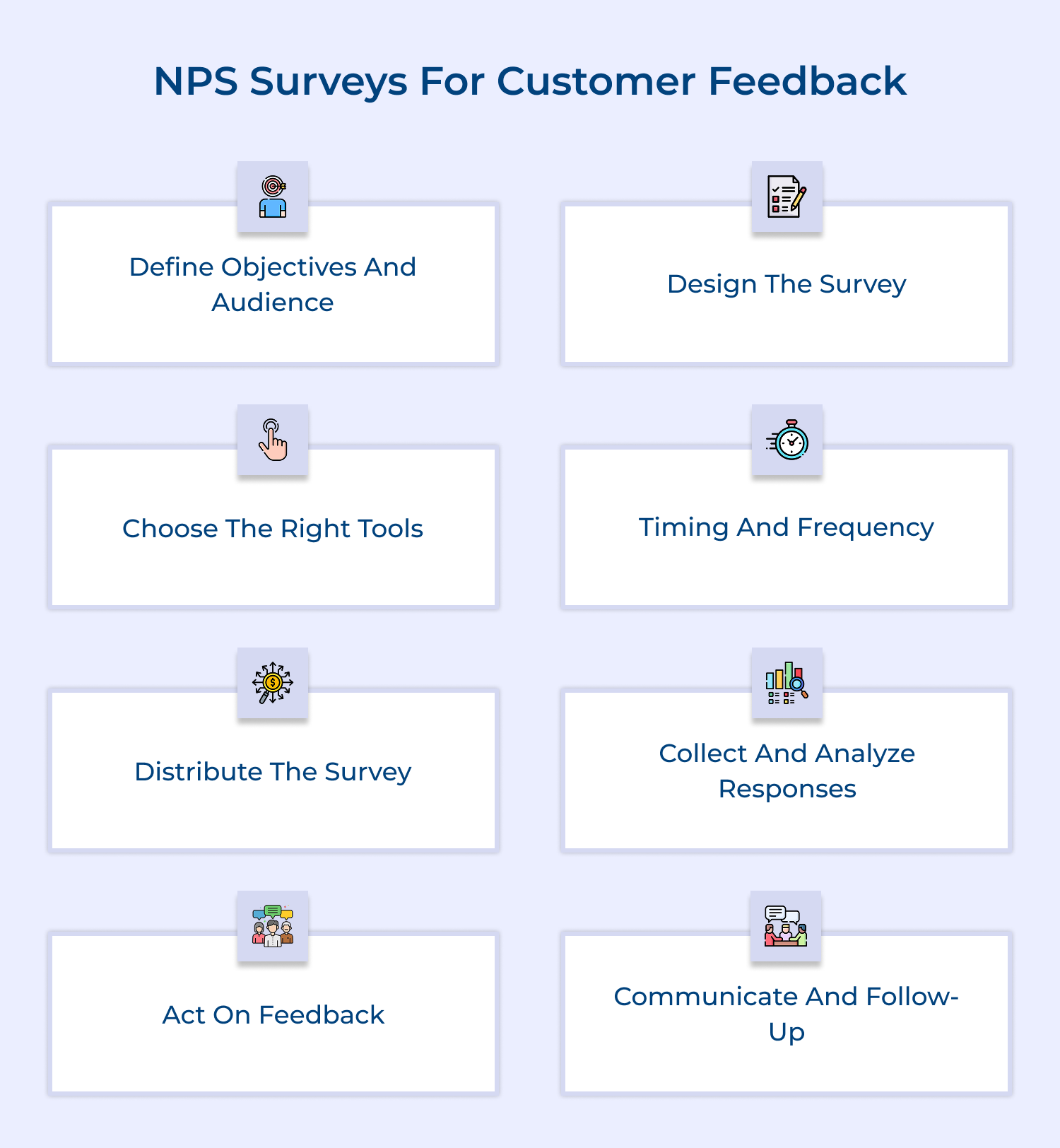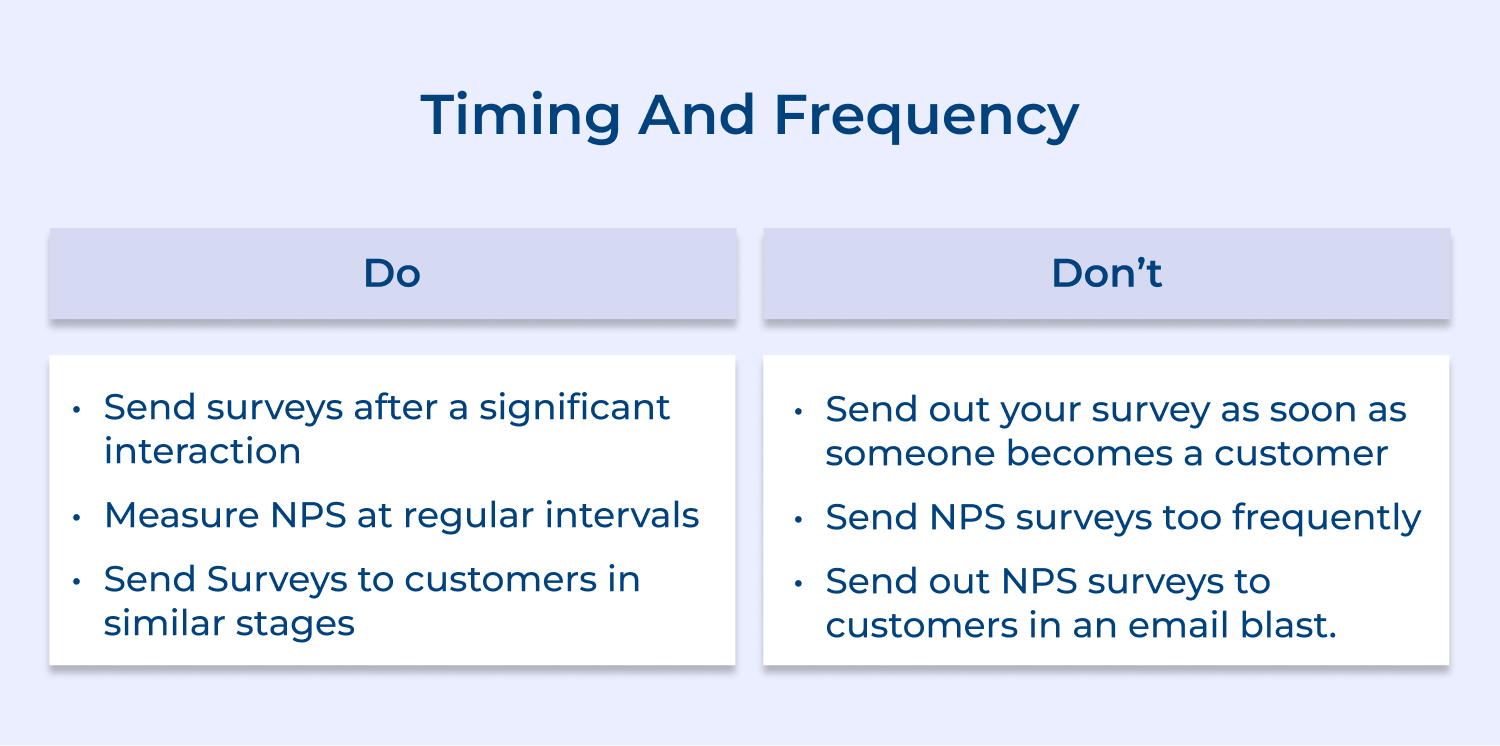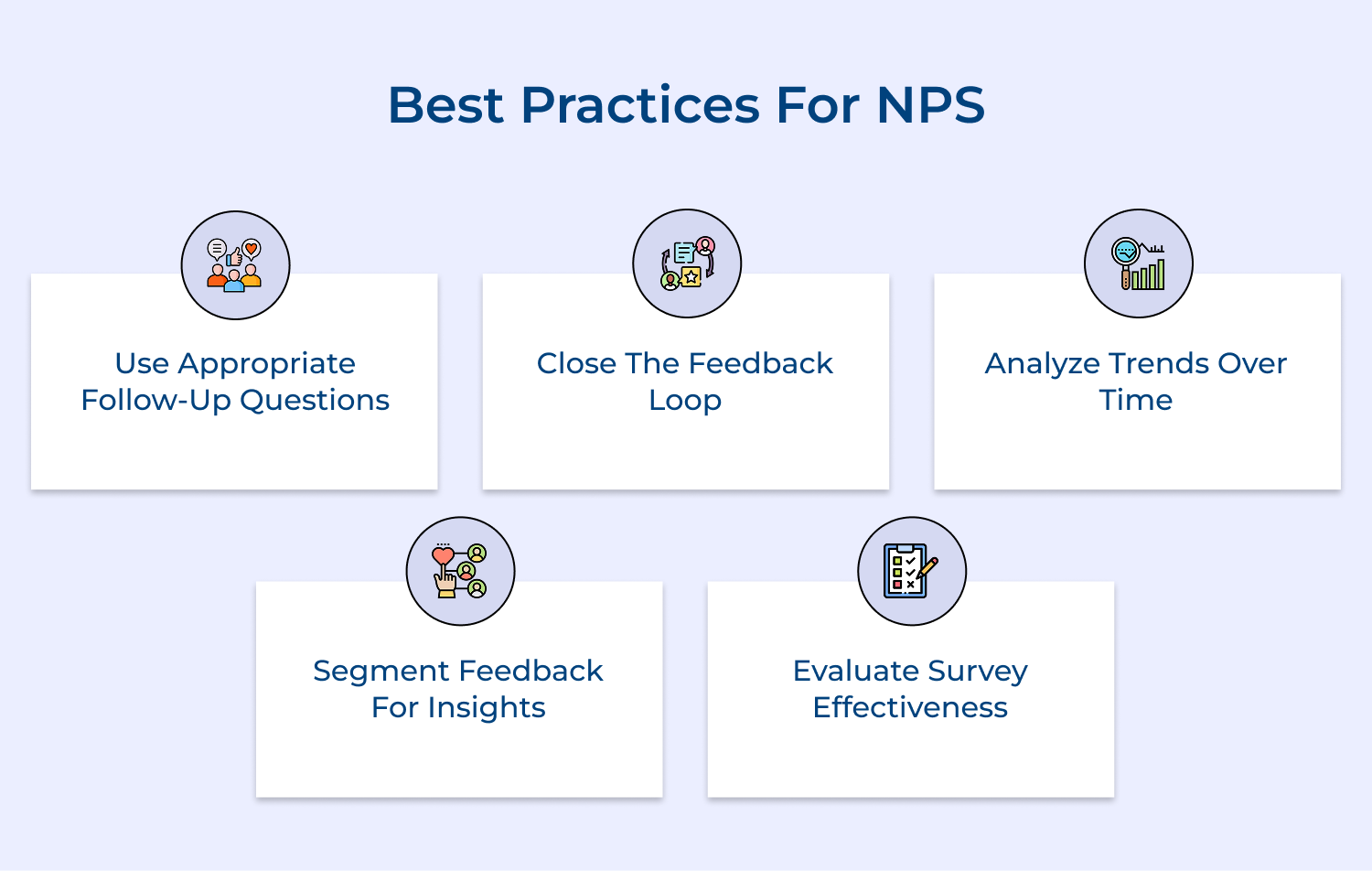1. Core NPS Question
The core NPS question is straightforward and focuses on measuring customer loyalty. It is the foundation of the NPS survey and is designed to gauge how likely customers are to recommend your company to others.
Question: “On a scale of 0 to 10, how likely are you to recommend [Company/Product/Service] to a friend or colleague?”
- Purpose: This question categorizes respondents into three groups:
- Promoters (9-10): Loyal and enthusiastic customers who are likely to advocate for your brand.
- Passives (7-8): Satisfied but not particularly enthusiastic customers.
- Detractors (0-6): Unhappy customers who may negatively impact your brand through word-of-mouth.
Implementation Tip: Ensure that the scale is clearly defined and the question is simple as well as easy to understand to avoid any confusion.
2. Follow-Up Question
The follow-up question helps to gather qualitative feedback and understand the reasons behind the given score. This provides context to the numerical NPS score while helping identify areas for improvement.
Question: “What is the primary reason for your score?”
Purpose: This open-ended question allows respondents to elaborate on their experiences, providing insights into what they value or what issues they encountered. It helps in pinpointing specific areas that need attention or improvement.
Implementation Tip: Encourage detailed responses by being specific in your follow-up question, such as asking about particular aspects of the service or product if the core question indicates dissatisfaction.
3. Additional Satisfaction Questions
To gain a deeper understanding of customer experience, you may include additional satisfaction questions that complement the core NPS question. These can provide insights into specific aspects of the customer experience.
Examples:
- “How satisfied are you with the quality of our [product/service]?”
- “How would you rate the responsiveness of our customer service team?”
Purpose: These questions help identify areas of strength and weakness within specific aspects of your business. They provide more detailed feedback that can be used to enhance the overall customer experience.
Implementation Tip: Keep these questions focused and relevant to the customer’s recent interactions to ensure the feedback is actionable as well as timely.
4. Benchmarking Questions
Benchmarking questions can be used to compare your NPS with competitors or industry standards. This helps in understanding your position relative to others in your market.
Examples:
- “How does our [product/service] compare to similar offerings from other companies?”
- “How likely are you to switch to a competitor based on your recent experience?”
Purpose: These questions provide context on how your brand stacks up against competitors and can highlight areas where your competitors may be outperforming you.
Implementation Tip: Use benchmarking questions sparingly and ensure they are relevant to the customer’s experience to get meaningful comparative insights.
5. Customer Demographics Questions
Demographic questions can help segment your customer base and analyze NPS scores across different groups. This can be useful for identifying trends and tailoring strategies to specific customer segments.
Examples:
- “What is your age range?”
- “What is your primary use case for our [product/service]?”
Purpose: Understanding demographic information helps in analyzing how different groups perceive your brand, allowing for targeted improvements and personalized customer engagement strategies.
Implementation Tip: Ensure that demographic questions are optional as well as respectful of privacy to avoid deterring respondents from completing the survey.
6. Closing Question
A closing question can provide an opportunity for customers to share any additional thoughts or feedback that may not have been covered by previous questions.
Example: “Is there anything else you would like to share about your experience with us?”
Purpose: This question allows respondents to provide any additional feedback or comments that may not fit into the structured questions. It can uncover valuable insights that are not captured elsewhere in the survey.
Implementation Tip: Keep the closing question open-ended and encourage respondents to provide any relevant information that could be beneficial for improving customer experience.











